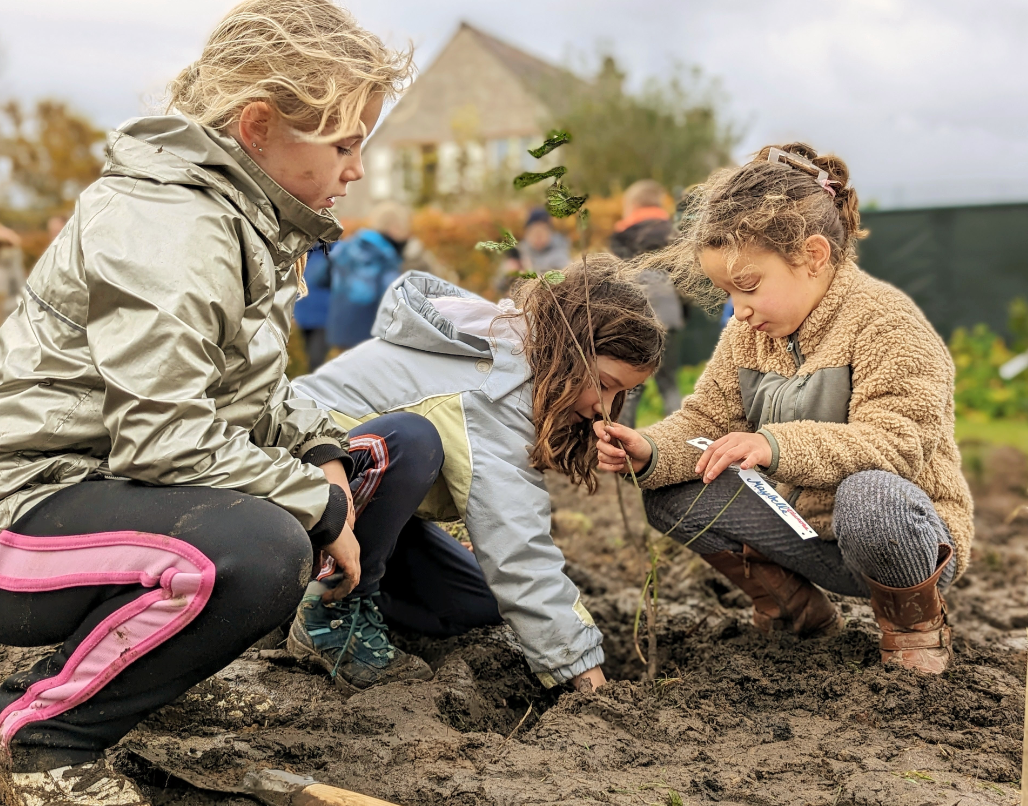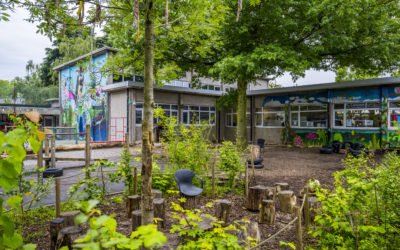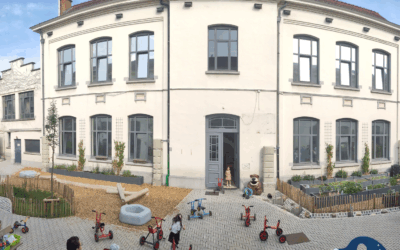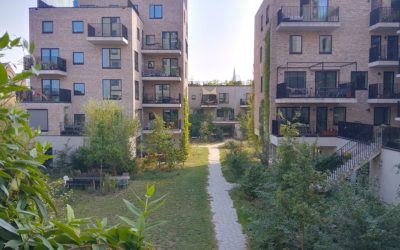The city supports EcoSchools that focus on climate with coaching and a subsidy of up to 30,000 euros.
Biodiversity at school
The project
At GoodPlanet Belgium, we bring nature back to schoolyards through our Mini-Oases project. By creating mini forests, edible gardens, and wildflower meadows, we transform grey school grounds into vibrant learning environments. These green spaces boost biodiversity, support climate resilience, and offer hands-on learning opportunities for students. With over 1000 mini forests, 2400 wildflower meadows and 250 edible forests planted since 2019 (around 25000 ha), and our mission is growing, one school at a time.

Project location
Contribution(s)
Project costs
Participant(s)

The project is led by GoodPlanet Belgium, which provides ecological expertise, educational resources, and coordination support. Schools play an active role by involving students and teachers in the design, planting, and long-term care of the green spaces. There are some financial partners funding the planting kits and educational materials, and supporting outreach. Local municipalities and nature experts often assist with site selection and provide logistical help. Volunteers and parents frequently contribute during planting days and community events, strengthening local ownership and long-term care.
How are the criteria of the objective met?
Buildings and infrastructures
Through the project, GoodPlanet Belgium helps schools establish small-scale, high-impact green spaces such as mini forests, edible gardens, and wildflower meadows. These measures meet biodiversity and climate adaptation criteria by increasing native plant diversity, supporting pollinators and wildlife, improving soil quality, and managing water retention.
- Respect and/or improve the specific ecological characteristics of the area (e.g. the topography, the type of landscape, the local plant and animal life) to effectively replace the gray/concrete surface;
- Use native species/subspecies that are more resilient and resistant to climate change, if appropriate;
- Incorporate elements that are suitable for the local biodiversity (appropriate vegetation types)
Possible initiatives in which the project is involved :

Long-term maintenance
The school is responsible for long-term care of the green spaces. Volunteers and parents frequently contribute during planting days and community events, strengthening local ownership and long-term care.
Benefits
Through the Mini-Oases project, GoodPlanet Belgium helps schools establish small-scale, high-impact green spaces such as mini forests, edible gardens, and wildflower meadows. These measures meet biodiversity and climate adaptation criteria by increasing native plant diversity, supporting pollinators and wildlife, improving soil quality, and managing water retention. Educational activities are embedded throughout the process, ensuring students and teachers understand and engage with the natural space.
Other projects linked to the objective: "Buildings and infrastructures"
Opération Ré-création
Bringing nature into school playgrounds.
Bijgaardehof and Bijgaardepark
Abandoned factory site is being transformed into a park extension and collective housing project that integrates biodiversity.


